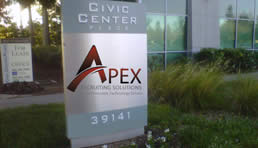




The list of social media platforms is constantly growing. The popularity and usage of each platform on that list is constantly growing. The number of drivers who fit your hiring criteria who happen to be using each platform on that list is constantly . . .you get the idea.
This constant growth creates endless opportunities for drivers to see you on social media. But I won’t go into the need for you to have a strong social media presence. I believe the ubiquitous nature of social media makes that need obvious, and you are probably already present on social media. The thing is, are you getting the best out of it?
Here are some ways to make sure.
What are the top social platforms? What do people do when they visit? What draws people to them? Be knowledgeable on what’s new and what’s popular so you can always be aware of what options you have.
Being present where drivers are present is an important element in your advertising. So the question is on which of the top picks will you find drivers?
According to our research, we’ve found that 79.9% of company drivers and 69.7% of owner-operators use social media with the top used being Facebook and YouTube. Studies show that smartphone users check Facebook 14 times a day. With the constant increase in mobile use among drivers, this creates an opportunity to advertise to drivers through Facebook that you can’t ignore. YouTube is no different with an average mobile viewing session of 40 minutes.
It’s easy to advertise on any and every social media platform out there, but knowing where you’ll find who you’re looking for allows you to focus your efforts on the right platforms.
Facebook and YouTube provide a wide variety of ways to target e.g. demographics, behavior, interests, etc. You can cast a wide net and catch a lot of drivers using these targeting methods. The only issue is that these targeting methods don’t ensure you reach the exact type of drivers you’re looking for.
A good way to narrow down the list of who sees your ads is to use driver database contact information e.g. email addresses, phone numbers, etc. Using this in addition to the targeting methods of social media platforms ensures your ads are seen solely by the drivers you want to reach.
First, let’s have the definitions in mind…
Using a social media platform’s free tools to be seen by people, i.e. sharing posts, responding to comments, etc.
Paying to have your ads displayed to specific people.
Looking at organic social’s definition gives immediate insight into the strength of organic social. No, it isn’t the fact that it’s free, though that’s a plus. It’s that it allows you to be seen by people in a natural setting. This is good way to introduce a brand or familiarize people with it. But you have to keep in mind, organic’s reach is very limited. There is no way to be certain your message is reaching the people who need to see it. This is where paid social comes in.
Paid content allows you to display ads designed to encourage and enable those who view it to take action. These ads with your specific message are delivered to the specific group of drivers you want to reach.
So understand that have to pay to turn interested drivers into leads. But the great thing is that the results are a reminder that it’s worth it.
Social Media has become a strong means to reach an audience of any kind. But if you’re finding that your advertising efforts on social media are not effective, it’s time to reevaluate your approach. Are you using the right platforms? Are you using those platforms effectively and to the fullest? Realigning your approach may be what you need to reach success.
![]()